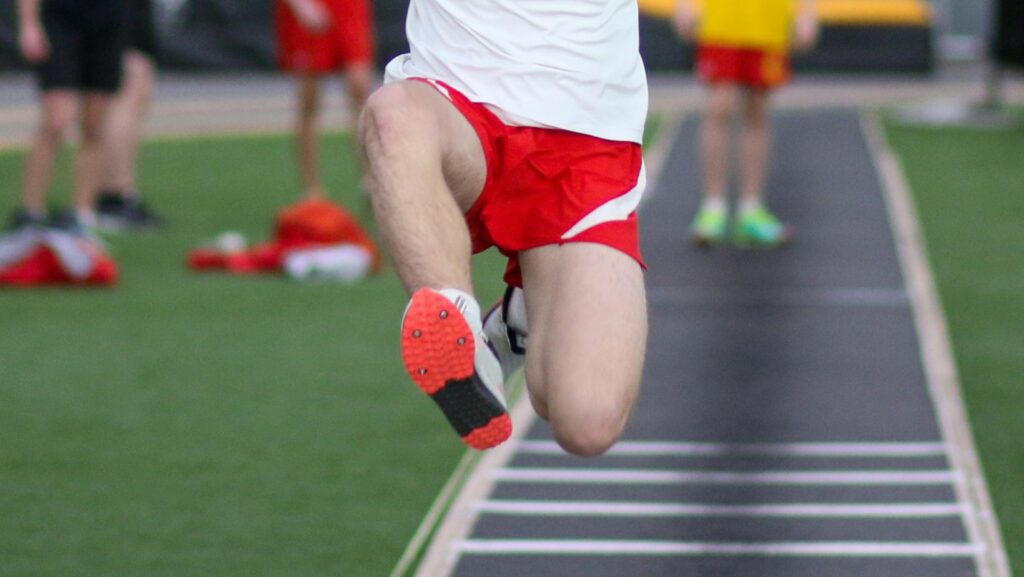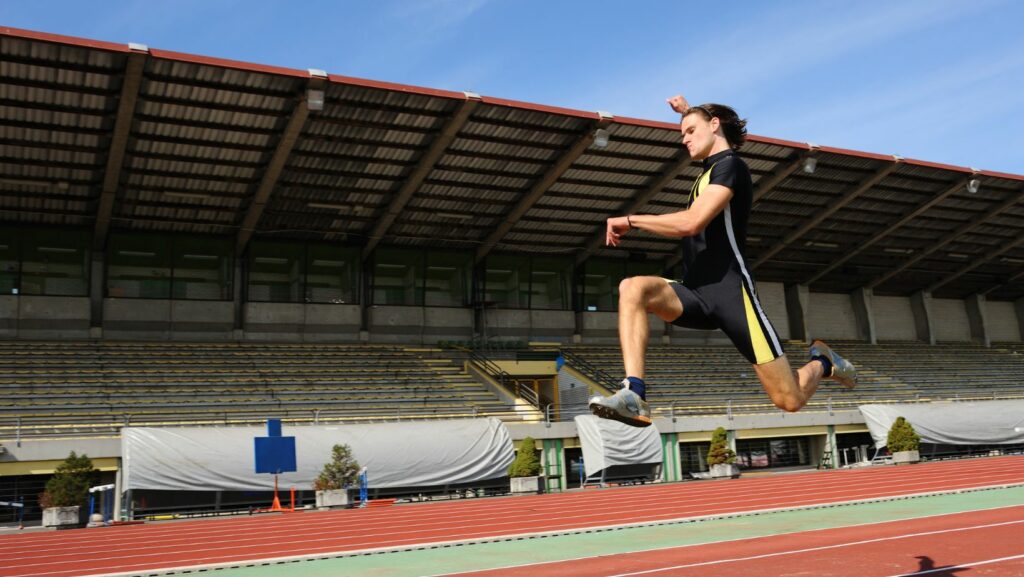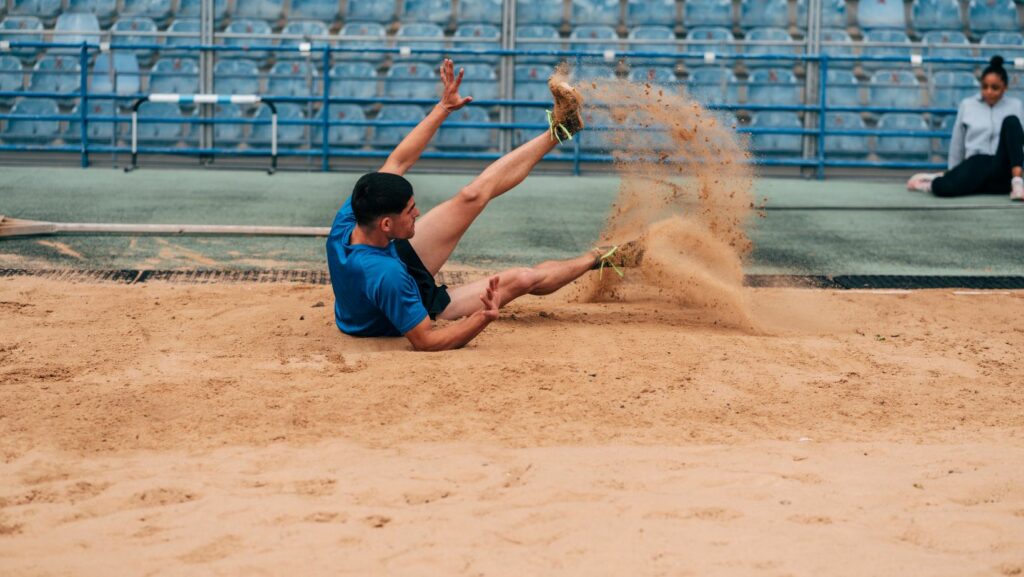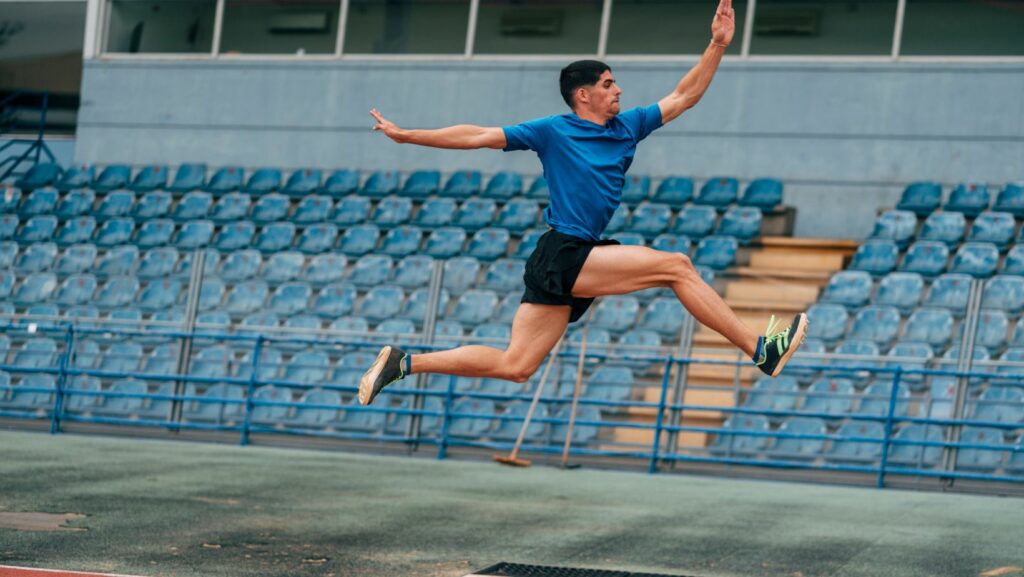Jarak Awalan Lompat Jauh Adalah
As an expert in track and field, I’ll delve into the intriguing topic of jarak awalan lompat jauh adalah or the starting distance in long jump. When it comes to athletics, precision is key, and understanding the optimal starting distance can make a significant difference in performance.

The starting distance in long jump Jarak Awalan Lompat Jauh Adalah refers to the point from which an athlete initiates their jump. This initial positioning plays a crucial role in maximizing speed, power, and overall jump length. Finding the ideal balance between explosive takeoff and maintaining stability is essential for achieving a successful leap.
In the world of competitive sports, every detail matters. Athletes meticulously fine-tune their technique to gain that extra edge over their opponents. Similarly, determining the optimal starting distance sets the foundation for a strong start and sets the stage for an impressive long jump performance Jarak Awalan Lompat Jauh Adalah.
Understanding the Long Jump Initial Distance
Exploring the jarak awalan lompat jauh adalah concept unveils the significance of the initial distance in long jump performances. This crucial phase sets the foundation for a successful leap, dictating an athlete’s momentum and positioning before takeoff.
In long jump, the initial distance refers to the length covered by an athlete in their approach run before executing the jump. It is vital as it determines the speed and power generated for lift-off, directly impacting the overall jump distance achieved.

Factors influencing this initial distance include an athlete’s speed during approach, stride length, and technique precision. Optimal coordination between these elements enhances propulsion and enables efficient transfer of kinetic energy into horizontal distance upon takeoff.
Athletes often undergo rigorous training to perfect their approach technique, aiming to maximize each step’s effectiveness while maintaining balance and control. Fine-tuning these skills can lead to significant improvements in overall performance on the track.
Factors Affecting the Long Jump Initial Distance
When considering the factors affecting the long jump initial distance Jarak Awalan Lompat Jauh Adalah several key elements come into play. Understanding these factors is crucial for athletes aiming to optimize their performance in this dynamic track and field event.
Takeoff Technique
The efficiency of an athlete’s takeoff technique significantly impacts the initial distance achieved in a long jump. Proper execution of the approach run, planting foot position, and takeoff angle are vital for generating optimal horizontal velocity during takeoff.

Speed and Power
Speed and power are fundamental components that influence how far an athlete can propel themselves during a long jump. The ability to generate explosive speed on the runway and convert it into vertical lift plays a critical role in maximizing the initial distance covered.
Body Positioning
Maintaining proper body positioning throughout each phase of the long jump is essential for achieving an optimal launch angle and trajectory. Factors such as hip extension, knee drive, arm swing coordination, and overall body alignment contribute to propelling the athlete forward with maximum efficiency.
Runway Surface Conditions
The condition of the runway surface can impact an athlete’s performance in the long jump. Factors like traction, consistency, and environmental variables (e.g., wind direction) can affect how well an athlete accelerates along the runway leading up to takeoff.

Equipment Quality
The quality of equipment used by athletes, including specialized footwear designed for traction and support during takeoff, can also influence their performance in the long jump event. Having access to well-maintained facilities with properly marked runways and landing pits contributes to creating an environment conducive to achieving longer initial distances.
Proper Nutrition and Rest for Optimal Performance
Ensuring optimal performance in the Jarak Awalan Lompat Jauh Adalah requires a holistic approach that encompasses proper nutrition and adequate rest. As an athlete, I understand the pivotal role these factors play in achieving peak physical condition. Let’s delve into how focusing on nutrition and rest can elevate your performance on the track.
Importance of Nutrition
- Fueling Your Body: Consuming a balanced diet rich in carbohydrates, proteins, healthy fats, vitamins, and minerals is essential for sustaining energy levels during training sessions and competitions.
- Hydration: Staying hydrated is key to maintaining peak performance. Proper hydration aids in regulating body temperature, lubricating joints, and transporting nutrients throughout the body.
- Pre-Competition Meals: Opt for easily digestible foods like fruits, whole grains, lean proteins, and vegetables before competitions to ensure sustained energy levels without feeling weighed down.

The Role of Rest
- Muscle Recovery: Rest plays a crucial role in muscle repair and growth. Adequate sleep allows your body to recover from intense workouts and helps prevent injuries.
- Mental Clarity: Quality rest enhances cognitive function, decision-making abilities, focus, and reaction times – all vital components of successful athletic performance.
- Importance of Rest Days: Incorporating rest days into your training schedule is as important as active workout days. These periods allow your muscles to recuperate fully.


More Stories
Why Ferrari Is the Perfect Choice for Dubai Roads
What Are the Hidden Costs of Moving from San Diego to Burbank?
Level Up Your Pest Control Business with Social Media